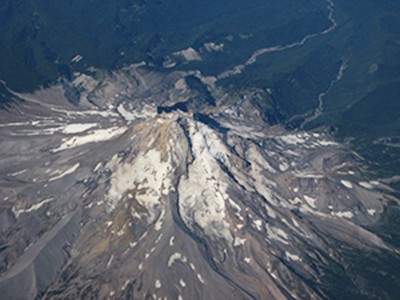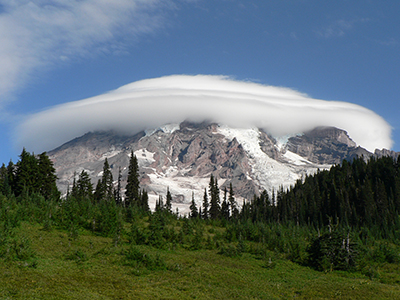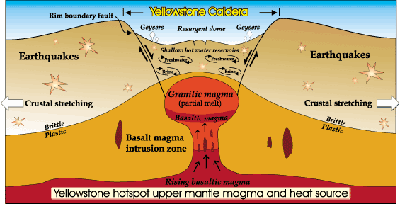
Parks’ volcanoes pose no imminent hazard
The 4.8 magnitude earthquake that occurred in the western part of Yellowstone National Park caused very minimal damage, however, led outsiders to believe a volcanic eruption could take place in the park soon. The earthquake, which occurred on March 30, lead to many animals fleeing the park. Scientists and park rangers had to debunk inaccurate speculation that the park and surrounding areas could be in danger.
Although there is no imminent hazard regarding a major volcanic eruption happening in the United States, scientists are always prepared for what could occur.
The volcano that was under examination at Yellowstone National Park was the volcano caldera. A caldera volcano is a large crater-like volcano. It forms from an explosive volcanic eruption in which the rock of the volcano collapses in an empty magma chamber.
A major volcanic eruption from a caldera could have a substantial impact on the world.
According to Jake Lowenstern, the scientist-in-charge of the USGS Yellowstone Volcano Observatory, “the climate effects of a large volcanic eruption are global. They are not local.”
Lava is not the only hazard to worry about with a volcanic eruption, as Ash and mud from an eruption could quickly spread across the country, carrying climate effects along with it.
With topics such as carbon emissions being a huge topic in society today, it is important to understand the effect the ash would have across the country.
 |
At left, an aerial View of Mount Hood Volcano, Oregon (Photo courtesy of Ken Lund, Flickr). Below, Mount Rainer Volcano in Washington is so large it can wrap itself in its own clouds (Photo courtesy of the National Park Service). Last, a National Park Service graphic describes how magma rises in the Yellowstone Caldera. |
Volcanic gases would be extremely harmful to the climate, and a large infusion could prove to be an enormous challenge to the world.
The largest eruption in recent history was nearly 200 years ago at Tambora in Indonesia. Lowenstern said the eruption “produced the ‘Year Without a Summer’ in New England and if a similar eruption occurred in the US, it would have major affects on surrounding states and a cascade of lesser but real effects throughout the country, and inevitably the world.”
 A year without summer has the potential to damage our country beyond repair. Depending on which states it would affect, a cloud of ash so large has the potential to fluctuate the amount of sunlight received. This would ultimately result in a drop of temperature, reducing the number of crops that could be grown that year.
A year without summer has the potential to damage our country beyond repair. Depending on which states it would affect, a cloud of ash so large has the potential to fluctuate the amount of sunlight received. This would ultimately result in a drop of temperature, reducing the number of crops that could be grown that year.
Volcanoes such as Mount Hood in Oregon and Mount Rainier in Washington are so close to urban developments and metropolitan areas that an eruption from either of them would have a significant impact on their respective states.
Dan Hottle, a National Park Service ranger and spokesperson for Yellowstone, said there was not reason to worry, however, as “the most-recent caldera-forming eruption in the Lower 48 was what formed Crater Lake, Oregon around 7,700 years ago.”
Recent studies have shown that an eruption in a major caldera volcano is not expected to occur in the next 1,000 to 10,000 years. Minor occurrences such as lava flow could happen, however this would take place so slowly that rangers would be able to protect people.
Al Nash, public affairs officer and spokesperson for Yellowstone National Park, said the issue surfaces from time to time.
“Every time some scholarly paper gets general media interest or someone picks up one of our 1,000 to 3,000 earthquakes a year, individuals with a certain “the end is near” worldview latch onto it as a sign the park is “about to blow.”
 Not all volcanic eruptions have damning results that would harm people and wildlife in the nearby area.
Not all volcanic eruptions have damning results that would harm people and wildlife in the nearby area.
Many tiny eruptions help scientists learn of the potential impacts lava flow and other factors could have.
While citizens may fear the impact an eruption could cause, those working on these causes understand when we would be in danger.
Science is advanced enough to notify those who would be in immediate danger a significant time before anything actually transpired.
The possible effects a major eruption are necessary to understand as they are much more global then we believe. Things we are reliant on such as clean air would be affected and create a large amount of stress on our lives.

Comments are Closed